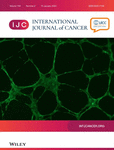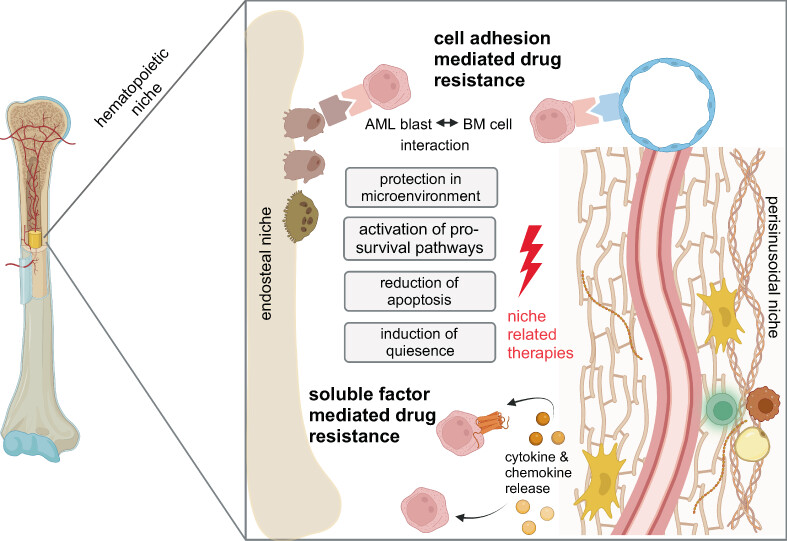Journal list menu
Export Citations
Download PDFs
ISSUE INFORMATION
REVIEW
The relevance of the hematopoietic niche for therapy resistance in acute myeloid leukemia
- Pages: 197-209
- First Published: 11 August 2023
SHORT REPORT
Cancer Epidemiology
Evaluating interactions of polygenic risk scores and NAT2 genotypes with tobacco smoking in bladder cancer risk
- Pages: 210-216
- First Published: 20 September 2023
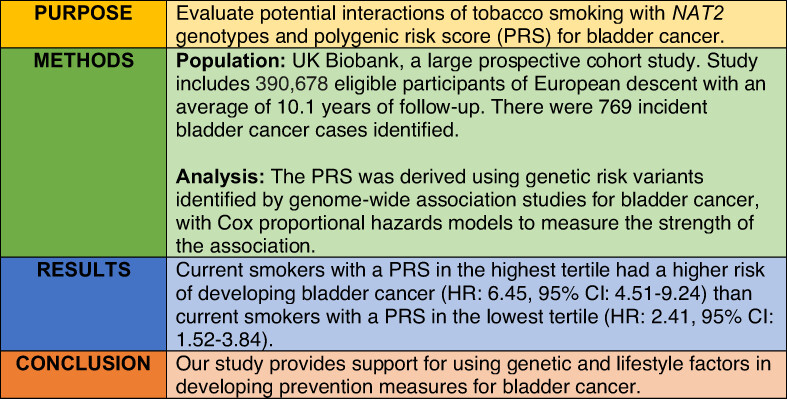
What's new?
N-acetyltransferase (NAT2) is essential for metabolizing carcinogenic aromatic amines found in tobacco smoke. Different NAT2 phenotypes, however, appear to be linked to bladder cancer risk, for which smoking is a leading cause. The authors of the present study investigated relationships between bladder cancer and smoking, NAT2 genotypes and polygenic risk score (PRS). Significant additive interactions were detected for smoking and PRS. Notably, current smokers with an elevated PRS or a slow metabolizing NAT2 phenotype experienced a five-fold increase in bladder cancer risk, highlighting the relevance of genetic and lifestyle factors in the generation of prevention strategies for bladder cancer.
RESEARCH ARTICLES
Cancer Epidemiology
Variations in the agreement of self-reported cancer: A Danish nationwide study
- Pages: 217-225
- First Published: 18 August 2023
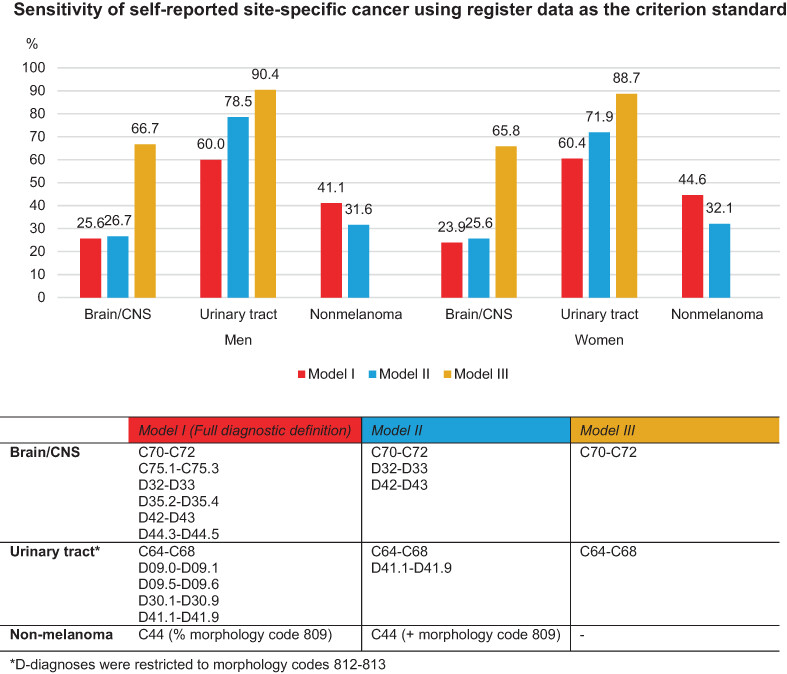
What's new?
Self-reported cancer data and data from cancer registries can vary significantly. Nonetheless, self-reported data often are used as a proxy for registry data when the latter is unavailable. Here, the authors examined the sensitivity and negative predictive value (NPV) of self-reported information on cancer history. NPV was consistently high across site-specific cancer diagnoses. Sensitivity varied and was lowest for cancers of the brain and central nervous system, nonmelanoma skin cancer, and urinary tract cancer. Thus, a relatively small proportion of respondents with registry-identified diagnoses reported cancer history. Sensitivity was affected by diagnostic definitions, however, which may impact future study methodologies.
Twenty-year outcome of prevalence, incidence, mortality and survival rate in patients with malignant bone tumors
- Pages: 226-240
- First Published: 19 August 2023

What's new?
Malignant bone tumors are extraordinarily diverse in clinical presentation, with patients often having nonspecific symptoms that delay diagnosis. Moreover, such tumors are exceedingly rare. In this report, to better understand the epidemiology of malignant bone tumors in China, the authors investigated incidence and mortality rates using information from the Surveillance, Epidemiology and End Results database. Analyses show that from 2000 to 2019, malignant bone tumor prevalence increased in China. The most commonly occurring bone cancer was osteosarcoma, which also had the greatest increase in incidence rate. Mortality and survival differed across subgroups, being influenced by various factors, including age and tumor type.
A rapid HPV typing assay to support global cervical cancer screening and risk-based management: A cross-sectional study
- Pages: 241-250
- First Published: 29 September 2023
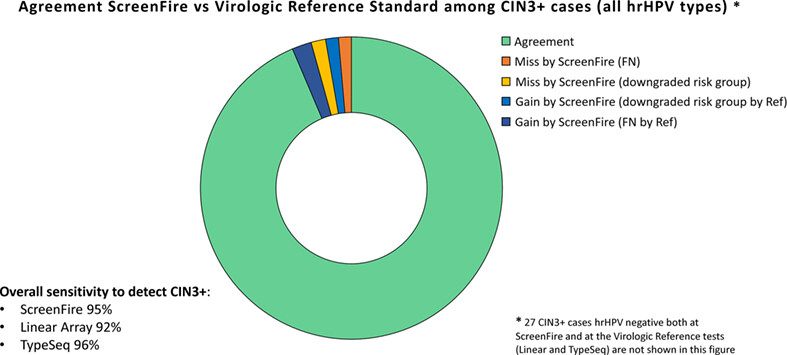
What's new?
With the 13 high-risk human papillomavirus (HPV) genotypes carrying different risks of progression to cervical cancer, extended genotyping is being included in triage strategies for management of HPV-positive women. ScreenFire is the first HPV genotyping assay specifically designed to quickly and inexpensively yield results grouped according to the risk of developing cervical cancer (HPV16, HPV18/45, HPV31/33/35/52/58 and HPV39/51/56/59/68). This study using a disease-enriched dataset shows that ScreenFire provides accurate genotype risk-level information that permits efficient primary HPV screening combined with risk-based clinical management of HPV-positive women in screen-and-treat or screen-triage-treat strategies. The formal validation, practicality and effectiveness of the assay for widespread dissemination are under study.
Potential causal links of long-term air pollution with lung cancer incidence: From the perspectives of mortality and hospital admission in a large cohort study in southern China
- Pages: 251-260
- First Published: 23 August 2023

What's new?
Air pollution has been associated with lung cancer incidence and mortality. However, most of the studies have taken place in Europe and North America, where exposure is generally low. This study uniquely uses large cohort data and causal inference to explore the potential causal relationships between long-term air pollution exposure and lung cancer incidence in Chinese adults. Findings show significant associations between particulate matter and nitrogen dioxide levels with lung cancer risks. This research highlights the urgent need for air pollution control policies, particularly in highly polluted areas and for vulnerable groups like the elderly and frequent exercisers.
The cancer burden in the oldest-old: Increasing numbers and disparities—A nationwide study in the Netherlands, 1990 to 2019
- Pages: 261-272
- First Published: 04 September 2023
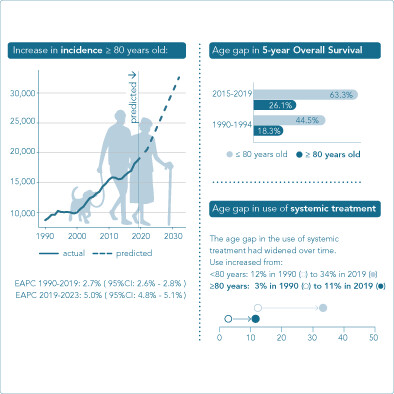
What's new?
Adults aged ≥80 years (the oldest-old) comprise the fastest growing age group in Western populations. Yet little is known about their cancer burden. This nationwide population-based study found that the incidence of the oldest old in the Netherlands doubled between 1990 and 2019 and is expected to grow annually by 5% up to 2032. The oldest-old seemed to have benefitted less from improvements in systemic therapy than younger patients, and the survival gap increased. The observed trends may serve as important indicators of the progress made in this patient population and help address future health care challenges.
Cervical precancer and cancer incidence among insured women with and without HIV in South Africa
- Pages: 273-283
- First Published: 02 September 2023
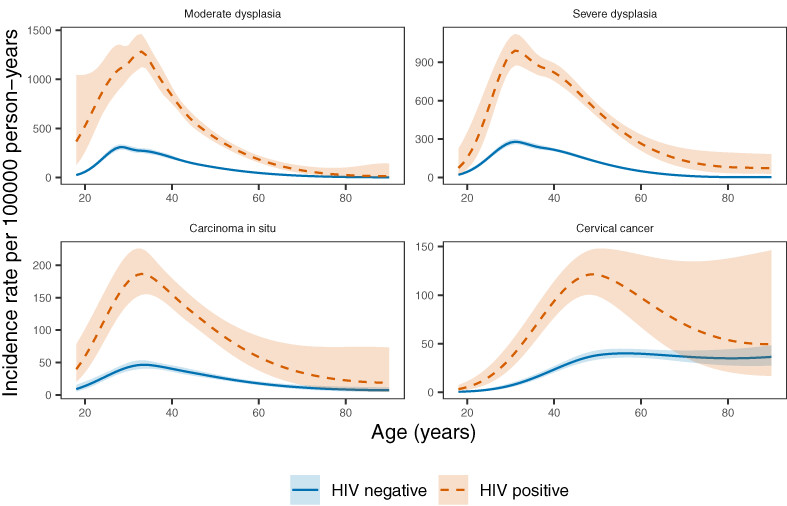
What's new?
Estimates of age-specific cervical cancer rates by HIV status are rarely available. This is especially problematic in sub-Saharan Africa, where HIV prevalence is high. Women living with HIV are more vulnerable to human papillomavirus infection—the primary cause of cervical cancer. In this medical reimbursement claims analysis from South Africa, the authors found that HIV had the greatest relative impact on incident cervical cancer burden among young women. Middle-aged women with HIV had the highest absolute burden of cervical cancer. Such estimates are essential for targeted prevention policies in regions with high incidence of HIV and cervical cancer.
Gynaecologic and breast cancers in women living with HIV in South Africa: A record linkage study
- Pages: 284-296
- First Published: 08 September 2023
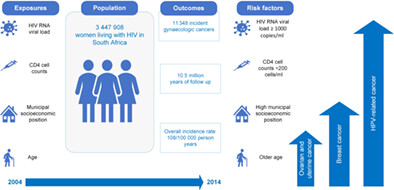
What's new?
Women living with HIV are at increased risk of cancers associated with human papillomavirus (HPV), such as cervical cancer. Here, the authors set out to determine the incidence and risk factors for gynaecological and breast cancers amongst women in South Africa living with HIV. Women in higher socioeconomic status municipalities were more likely to be diagnosed with breast cancer or HPV-related cancers, they found. Low CD4 counts and high HIV RNA viral loads also increased the risk of developing HPV-related cancers.
Association between serum urea concentrations and the risk of colorectal cancer, particularly in individuals with type 2 diabetes: A cohort study
- Pages: 297-306
- First Published: 06 September 2023
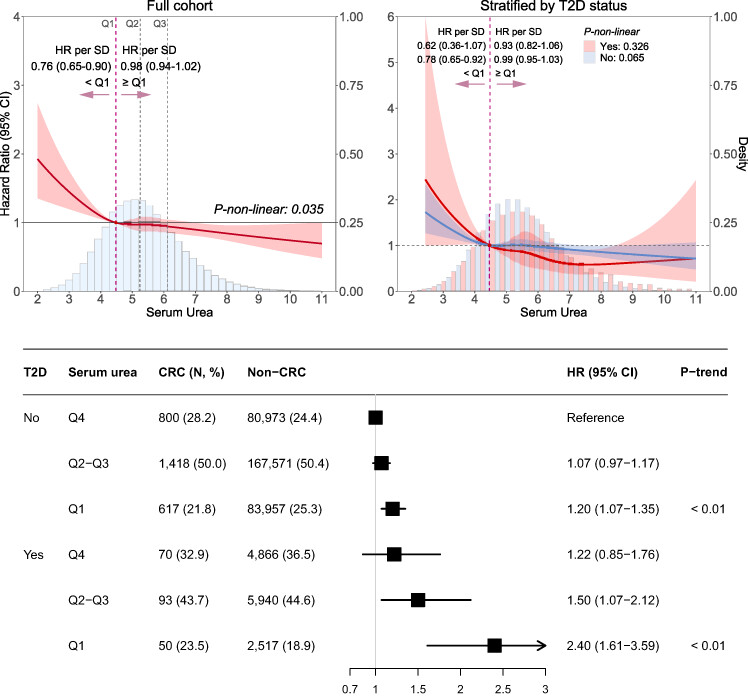
What's new?
Dysregulation of the urea cycle has been detected in colorectal cancer, but the role of urea in colorectal cancer development remains unclear. This large-scale cohort study revealed an association between reduced serum urea levels and elevated colorectal cancer risk. Stratified analysis suggested that protein diet, body mass index, estimated glomerular filtration rate and polygenic risk score may not influence this relationship, which was however more pronounced in participants with type 2 diabetes. The findings highlight the potential importance of maintaining stable serum urea levels for colorectal cancer prevention, especially in populations with type 2 diabetes.
Cancer Genetics and Epigenetics
Remote modulation of WWOX by an intronic variant associated with survival of Chinese gastric cancer patients
- Pages: 307-319
- First Published: 24 August 2023
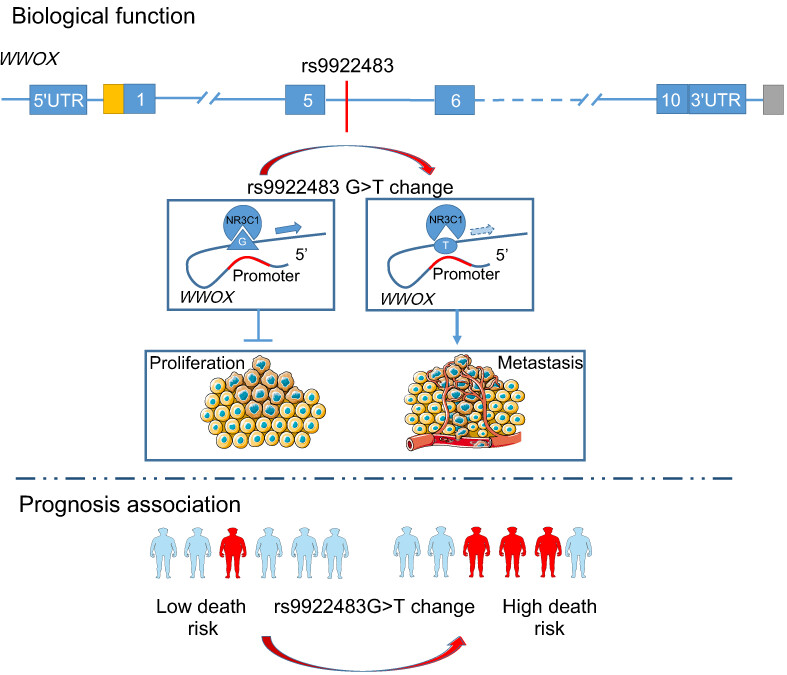
What's new?
WWOX closely interacts with the mTOR and DNA repair pathways, which have been found to harbor genetic variants associated with survival in patients with gastric cancer. In this ongoing genome-wide association study, the authors identified an intronic variant in WWOX with a cis-regulatory effect on WWOX gene expression, likely through long-range promoter interaction and allele-specific effect on NR3C1 binding. The G>T change decreased WWOX expression, promoted proliferation and metastasis of gastric cancer cells and predicted worse survival in patients with gastric cancer. The results linked WWOX genetic variants to epigenetic modulation and gastric cancer patients' survival.
Cancer Therapy and Prevention
The impact of the temporal sequence of cranial radiotherapy and platin-based chemotherapy on hearing impairment in pediatric and adolescent CNS and head-and-neck cancer patients: A report from the PanCareLIFE consortium
- Pages: 320-331
- First Published: 15 September 2023
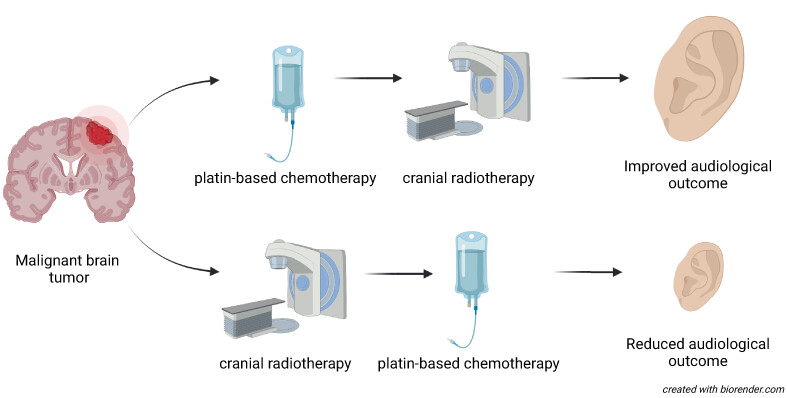
What's new?
Treatment for pediatric central nervous system (CNS) and head and neck (HN) cancers includes a combination of surgery, radiation therapy, and chemotherapy. However, sensorineural hearing loss (SNHL) can arise from the combined action of radiation and chemotherapy. Here, the authors examined whether the sequence of therapies affected the incidence of SNHL. In a study of 119 patients, they found that 73% of patients who received radiation before chemotherapy experienced SNHL compared with 34% of those who received chemotherapy first. However, no studies have yet compared treatment outcomes based on sequence of therapy.
Exploring the impact of patient-specific clinical features on osimertinib effectiveness in a real-world cohort of patients with EGFR mutated non-small cell lung cancer
- Pages: 332-342
- First Published: 15 October 2023
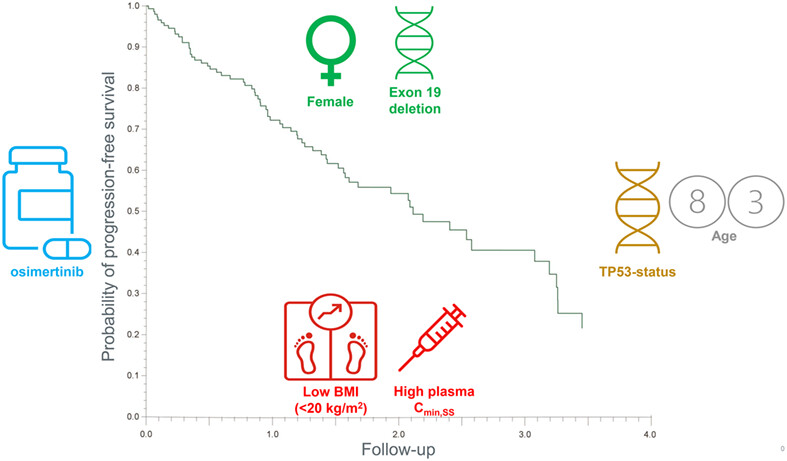
What's new?
Patients with non-small cell lung cancer (NSCLC) and a sensitizing epidermal growth factor receptor mutation (EGFRm+) potentially benefit from treatment with the third-generation tyrosine kinase inhibitor osimertinib. Here, the authors evaluated the impact of NSCLC patient characteristics on outcomes associated with osimertinib. In osimertinib-treated patients with metastatic EGFRm+ NSCLC, male sex, low body mass index and high steady state osimertinib plasma trough concentration were associated with shorter survival. Meanwhile, increased progression-free survival was linked to female sex and primary EGFR exon 19 deletion, suggesting that osimertinib treatment strategies can be tailored to improve outcomes among EGFRm+ NSCLC patients.
Immune landscape of vulvar cancer patients treated with surgery and adjuvant radiotherapy revealed restricted T cell functionality and increased IL-17 expression associated with cancer relapse
- Pages: 343-358
- First Published: 03 October 2023

What's new?
Vulvar cancer is a rare gynecologic tumor treated with radiotherapy that affects the host immune system. Here, we provide new insight into systemic therapy-induced individual immunity of patients, revealing increased frequencies of tumor-promoting interleukin(IL)-17-producing CD4+ and CD8+ T cell subsets after radiotherapy, while other T cell subsets important for cancer cell elimination, like T-helper (Th)1 and cytotoxic T cells, were decreased and showed high expression of the Programmed Cell Death Protein (PD) 1 indicating restricted functionality. Moreover, this imbalance within the post-therapeutic immune milieu was associated with shorter recurrence free survival suggesting IL-17 and PD-1 as target for immunotherapy in vulvar cancers.
Molecular Cancer Biology
MAdCAM-1 targeting strategy can prevent colitic cancer carcinogenesis and progression via suppression of immune cell infiltration and inflammatory signals
- Pages: 359-371
- First Published: 07 September 2023
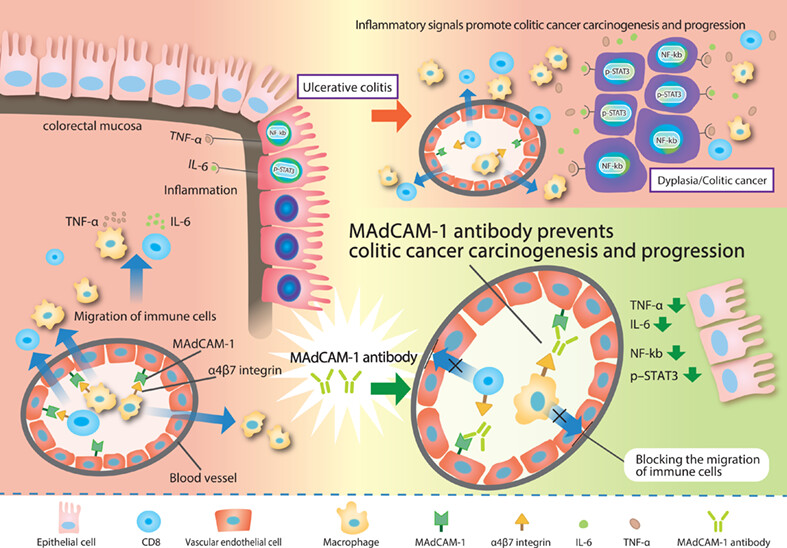
What's new?
Expression of mucosal addressin cell adhesion molecule-1 (MAdCAM-1) in endothelial tissue is linked to immune cell infiltration and inflammatory signalling in ulcerative colitis (UC). However, the role of MAdCAM-1 in UC associated dysplasia/colitic cancer and the potential of targeting MAdCAM-1 was previously unknown. The present study examined relationships between MAdCAM-1 and features of UC associated dysplasia/colitic cancer. Numbers of vessels expressing MAdCAM-1 were significantly elevated in UC and dysplasia/colitic cancer patient samples. In mice, MAdCAM-1 blocking antibody suppressed CD8+, CD68+, and CD163+ immune cell migration to inflammatory intestinal mucosa. This effect was associated with reduced colon carcinogenesis and tumour aggressiveness via suppressing IL6/p-STAT3 and TNFα/NF-κB pathway expression.
Tumor Immunology and Microenvironment
Testicular germ cell tumour cells release microRNA-containing extracellular vesicles that induce phenotypic and genotypic changes in cells of the tumour microenvironment
- Pages: 372-388
- First Published: 26 August 2023
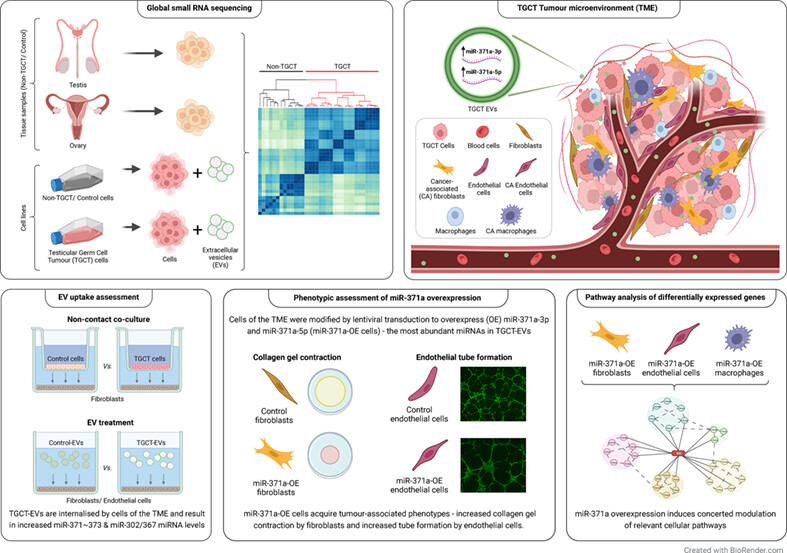
What's new?
Testicular germ cell tumours (TCGTs) are characterised by overexpression of certain microRNAs, short non-coding RNAs that regulate gene expression by binding to mRNA molecules. TCGT cells release these microRNAs into the bloodstream in extracellular vesicles (EVs). Here, the authors showed that EVs released from the tumour cells can deliver microRNAs into cells of the tumour microenvironment, potentially contributing to tumour progression. The authors suggest that these microRNA-containing EVs could be useful as clinical biomarkers or potential therapeutic targets.
Tumor Markers and Signatures
Diagnostic accuracy of HPV16 early antigen serology for HPV-driven oropharyngeal cancer is independent of age and sex
- Pages: 389-402
- First Published: 11 September 2023

What's new?
Human papillomavirus (HPV) is driving an increasing proportion of head and neck cancers (HNC), and patients with HPV-driven cancers may have different treatment needs. Serum antibodies against HPV16 early antigens appear to be a highly sensitive biomarker for HPV-driven HNC. Here, the authors investigate the accuracy of HPV early antigen serology across populations of varying characteristics, including age and sex. Overall, they found that HPV serology showed high sensitivity and specificity which was retained independent of age, sex, and other characteristics.




